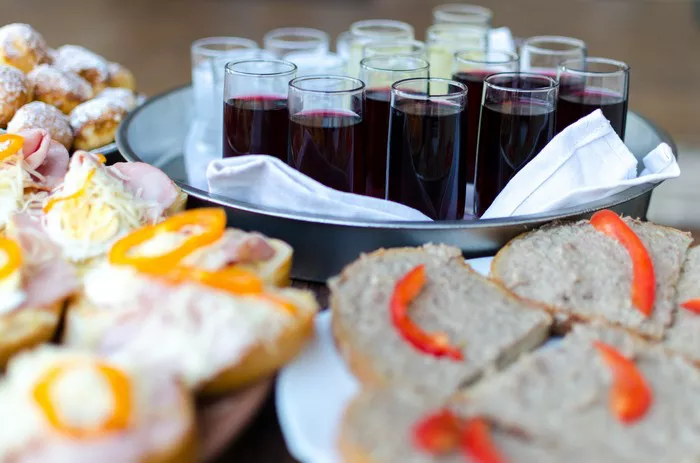How is honey wine made? This question often sparks curiosity among enthusiasts of both wine and culinary arts. Honey wine, also known as mead, holds a rich history dating back thousands of years. Its production involves a delicate balance of science and artistry, transforming simple ingredients into a beverage revered for its unique flavors and cultural significance. In this article, we delve into the intricate process of crafting honey wine, exploring each step from ingredient selection to fermentation and aging.
Exploring the Ingredients
At the heart of every batch of honey wine lies its primary ingredient: honey. The quality and character of the honey significantly influence the final product’s flavor profile. Beekeepers carefully harvest honey from various floral sources, each imparting distinct nuances to the mead. From the delicate floral notes of orange blossom honey to the robust richness of buckwheat honey, the possibilities are endless. Additionally, water serves as a crucial component, providing the necessary medium for fermentation. Some recipes may incorporate fruits, spices, or herbs to enhance complexity and depth.
The Brewing Process Begins
How is honey wine made? The brewing process begins with the careful blending of honey and water in precise proportions. This mixture, known as “must,” forms the foundation of the mead. The ratio of honey to water determines the mead’s sweetness and alcohol content, with higher honey concentrations yielding sweeter, stronger brews. The must is heated gently to dissolve the honey completely, creating a homogeneous liquid ready for fermentation. At this stage, brewers may choose to add additional ingredients such as fruits, spices, or yeast nutrients to tailor the flavor profile and support healthy fermentation.
Fermentation: Nature’s Alchemy
Fermentation stands as a pivotal stage in the journey of honey wine. Yeast, the unsung hero of fermentation, transforms sugars present in the honey into alcohol and carbon dioxide. How is honey wine made without yeast? Traditionally, wild yeasts present in the environment would initiate fermentation, but modern brewers often opt for cultured yeast strains to ensure consistency and control over the fermentation process. Fermentation vessels, ranging from simple carboys to sophisticated stainless steel tanks, provide a conducive environment for yeast activity. As fermentation progresses, bubbles of carbon dioxide rise to the surface, signifying the conversion of sugars into alcohol.
See Also: how many calories in a 750 ml bottle of red wine
The Art of Patience: Aging and Maturation
Once fermentation subsides, the young mead enters a period of aging and maturation, where its flavors develop and harmonize over time. How is honey wine made to achieve complexity and depth? Aging vessels play a crucial role in this process, with options ranging from oak barrels to inert containers such as glass carboys. Oak aging imparts subtle flavors of vanilla, spice, and toast, enriching the mead with layers of complexity. During aging, flavors mellow, and harsh edges soften, resulting in a more refined and balanced beverage. Depending on the desired style, mead may age for months or even years before reaching its peak.
The Journey to Perfection: Blending and Flavoring
Crafting exceptional honey wine often involves the art of blending and flavoring. How is honey wine made to achieve a desired taste profile? Blending allows brewers to marry different batches of mead, balancing sweetness, acidity, and other flavor components to create a harmonious final product. Additionally, flavoring agents such as fruits, spices, or botanicals can be introduced during or after fermentation to impart unique characteristics. Whether it’s the vibrant zest of citrus fruits or the warming spice of cinnamon, these additions elevate the complexity of the mead, offering a sensorial journey with every sip.
Clarification and Stabilization: Polishing the Jewel
Before bottling, honey wine undergoes clarification and stabilization to ensure clarity, stability, and longevity. How is honey wine made to achieve crystal-clear brilliance? Clarification involves the removal of suspended particles and haze-causing substances through fining agents or filtration. This step enhances the mead’s visual appeal, presenting it as a jewel-like liquid in the glass. Stabilization aims to prevent refermentation and spoilage by inhibiting microbial activity and oxidative reactions. Potassium sorbate and sulfites are commonly used additives to achieve stability, preserving the mead’s freshness and flavor integrity.
Bottling and Presentation: Sharing the Craft
As the culmination of the brewing process, bottling transforms honey wine into a tangible expression of craftsmanship, ready to be shared and savored. How is honey wine made to captivate the senses? Bottles are meticulously cleaned and sanitized to maintain product purity and integrity. Some brewers opt for traditional cork closures, while others prefer modern screw caps or crown seals, each offering its own aesthetic and functional appeal. Labels adorned with unique artwork and tasting notes add an element of storytelling, inviting consumers to discover the journey encapsulated within each bottle.
The Legacy of Honey Wine
In conclusion, the art of honey wine making embodies a timeless tradition passed down through generations, celebrating nature’s bounty and human ingenuity. From humble beginnings as a simple blend of honey and water to complex creations infused with fruits, spices, and herbs, mead continues to captivate and inspire. Whether enjoyed as a toast to special occasions or a quiet moment of reflection, honey wine invites us to savor the essence of life’s sweetness, one sip at a time. So, the next time you raise a glass of mead, ponder the question: How is honey wine made? And let its story unfold on your palate, a testament to the enduring legacy of craftsmanship and creativity.


